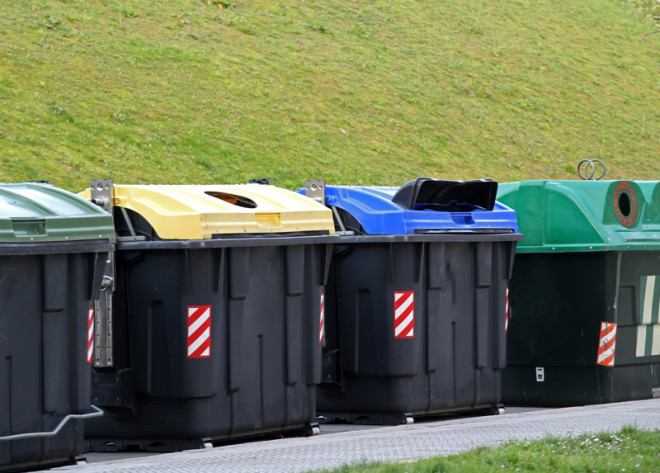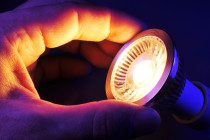Switching gears from building the world’s fastest street-legal electric car to designing powertrains for garbage trucks may seem like a career-stalling move, but for Ian Wright, founder of Wrightspeed, the choice was a “no-brainer.” Wright, a Tesla co-founder, aims to take the momentum of the electric vehicle to the next level by retrofitting commercial vehicles, which are notorious for guzzling gas, contributing to air and noise pollution, and falling short of emissions standards, with electric hybrid powertrains. Garbage trucks that inch along city streets, making upwards of 1000 stops per day, are ideal candidates since electric powertrains have an advantage at low speeds requiring a lot of torque. While perhaps not quite as glamorous as working with high-performance sports cars, Wright saw a unique opportunity to revolutionize the operating standards for commercial vehicles, such as waste removal and delivery vehicles.
Initiating dramatic change in an established market will be challenging, but Wright is hoping early adopters—namely FedEx and the Ratto Group, a Santa Rosa-based waste management company—will be powerful endorsements. Wrightspeed powertrains will be installed on 25 FedEx trucks and 17 Ratto Group garbage trucks. As jurisdictions continue to clamp down on carbon emissions and pollution levels, the electric vehicle market stands to see incredible growth. As Lou Ratto, the company’s chief operating officer, explains: “My hope is that this is something we can prove together with Wrightspeed and that we can be on the cutting edge of this, and I can transform my fleet and hopefully transform my industry.” The proprietary technology behind Wrightspeed’s powertrain seeks to be the winner in the race to find the most efficient green option for commercial fleet vehicles.
How does it work?
Wrightspeed promises a “high-power medium-duty powertrain that uses electric drive with an onboard power station” resulting in fuel savings, a reduction in ongoing maintenance, as well as a much quieter, cleaner vehicle. A truck that has been retrofitted with a Wrightspeed powertrain will run on batteries for approximately 48 kilometres before the turbine, which can use a variety of fuels including diesel, natural gas, or landfill gases, engages and recharges the battery. The power behind this powertrain is in the sum of its parts, specifically the ‘Fulcrum’ and the Geared Traction Drive (GTD). In simple terms, the Fulcrum (which is 100% Wrightspeed intellectual property) uses turbine technology to charge the battery pack and works efficiently in “high-power stop-and-go applications.” The Wrightspeed GTD channels a “Silicon Valley systems approach” that simplifies the complexity of mechanical systems using the software control of electronics, making them lighter, cheaper, and more efficient.
The Wrightspeed advantage:
- The Fulcrum is approximately 1/10th the weight of an 80kW complete piston-engine generator system with an equivalent 10,000 hour life at full power
- The Fulcrum is approximately 10 times cleaner than piston engines, requiring no exhaust after-treatment to meet emission standards
- The system roughly doubles the fuel efficiency of trucks
- Ultra-low vibration makes a smooth, comfortable ride for drivers and a quiet external experience
- The Fulcrum is durable and low maintenance and can burn a variety of fuels including: diesel, CNG, LNG, landfill gases, bio-diesel, kerosene, propane, heating oil, etc.
Next steps for Wrightspeed
The company is looking to increase its workforce from 25 to 250 employees over the next three years, and to accommodate projected growth, they are moving operations to an empty aircraft hangar at the former U.S. Naval Air Station in Alameda, California. If the Ratto Group likes the results, they have over 300 vehicles that could undergo conversion in the future. With roughly 2.2 million commercial trucks in the U.S. alone, there is some incredible growth potential. Wright is predicting that within 10 years, half of all U.S. garbage trucks will be powered by battery-electric systems.
While Wright doesn’t hesitate to share his admiration of Tesla Motor’s accomplishments in the realm of personal-use vehicles, he is quick to point out that his business approach is different and, in his opinion, better: “I think what they’ve done is absolutely fantastic, but what we’re doing is the next thing. It’s even better.” Specifically, Wright points out that the scalability factor for fleets of vehicles consuming vast amounts of fuel per year means operators start seeing a return on their investment, in the form of fuel savings, much quicker. At the end of the day, it doesn’t matter who’s better. When it comes to creating products that contribute positively to reducing our impact on the environment and bettering the world as a whole, everybody wins.
About The Author

-
Serial Entrepreneur, Technologist and Inventor.
My objective is to develop useful products that have a net positive effect in the lives of those that use them and the environment that we live in.
CEO of Mission LED Lighting Company Ltd.
- 2017.05.24LED factsWhy Are Cars Switching to LEDs if They’re Too Bright?
- 2017.05.09Be green & saveHow to Easily Replace T8 Fluorescent Tubes With LED
- 2017.03.07Build a better future7 Things About Explosion Proof LED Lighting You Should Know
- 2017.02.28Be green & saveWhy We Love LED Grow Lights (And You Should, Too!)





Leave a Reply